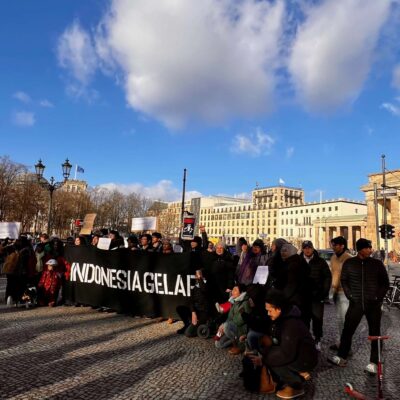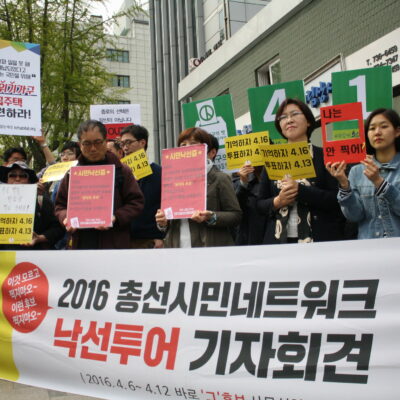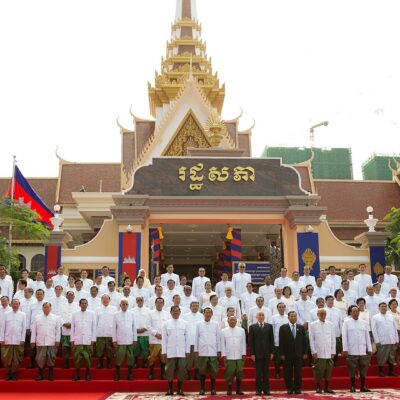The highly controversial attitude to women’s attire in Bangladesh has been revealed again recently by an incendiary comment by the High Court during the hearing of a bail plea of an accused, Marzia, who had hurled verbal and physical abuse at a university student and grabbed her by the clothes at Narsingdi Railway Station on May 18. She instigated a mob to join her in assaulting the student for wearing ‘indecent clothes’ (a sleeveless top). On August 16, instead of questioning the intent of the abusers, the High Court bench placed the blame on the victim, asking ‘whether anyone wearing such a dress can go to the railway station in a civilised country.’ The paternalist and protectionist attitude of the court sparked outrage. Women may occupy very different spaces in society’s intersections, but they do not seek ‘protection’; instead, their fight has always been for life, dignity, and freedom.
This incident would have gone unnoticed if the video of the assault had not gone ‘viral’ on social media; comment sections were soon filled with rage, some condemning the abuser, others the survivor. Many netizens directed their anger at feminists, demanding they take ‘more action’. Prominent women’s organisations such as Bangladesh Mahila Parishad (BMP) (‘Bangladesh Women’s Council’), Ain o Salish Kendra (ASK) (‘Legal Aid and Human Rights Organisation’) and Naripokkho (NP) (‘On the Side of Women’) were alarmed by the incident and the reaction, vehemently protesting the High Court’s comment for potentially encouraging misogyny and in conflict with the constitution (see for example Naripokkho’s statement). The incident also brought out younger feminists who organised themselves and revisited the station in solidarity with the survivor, held a peaceful procession and later organised a ‘dress as you like’ to protest the Court’s comment. In the backlash that followed, many activists were trolled and even received death threats. Women’s bodies once again became a battlefield – a target for surveillance and tool for resistance. Strong protests forced the suspension of the anticipatory bail for Marzia, while the education minister Dr Dipu Moni stated ‘now is not the time to talk about the length of women’s dresses,’ and condemned communal attitudes surrounding women’s clothing. These outcomes may make it seem that the matter was effectively resolved through the engagement of the ‘ideal triad’ of democratisation—state-citizen-civil society. The reality, however, is far from ideal.
While the creative activism of emerging ‘civil society’ groups/networks brought hope, the relentless rise of gender and religious identity-based, so-called ‘uncivil society’ over the past decade, spewing hate speech and spreading misogyny, is a cause for concern. There have been several attacks on women in the second half of 2022, either for wearing a tip/bindi on the forehead, western clothes, an off-shoulder blouse, or, indeed, for simply being a woman. Not all cases of violence against women are reported, let alone ‘go viral’ on social media. If we had paid attention, we would have noticed that women’s organisations have been compiling these reports meticulously and publishing them periodically for civic engagement. BMP for example recently labelled 2021 as a violent year in which 3,703 incidents of torture and sexual violence against children and women took place across the country. At the same time, ASK reports that in this year alone (January-September 2022), there have been 734 cases of rape, 136 cases of sexual harassment, 158 cases of domestic violence against women and 883 cases of violence against children. Yet, for every sensational case, it is the women’s organisations that are condemned for being ineffective as civil society bodies, whereas both the ruling party and the state remain unscathed. I argue, however, as an academic and an activist working for BMP, the country’s oldest women’s organisation for almost three decades, that this amnesia is selective and political, akin to placing the blame on the victim, i.e., the weaker node (civil society) that is working on the ground, instead of either the perpetrators or the state—which not only allows this to happen but is also supposed to be the strongest political institution and the ‘arbiter’ of fundamental human rights.
The popular notion that women’s organisations and ‘civil society’ in general are inactive or ineffective does not bear scrutiny, but it does point us toward an important feature of what has become ‘common-sense’ in both popular and academic discourses on politics—that contemporary social movements are ‘deradicalised,’ pale shadows of a once glorious past. I argue that not only is this characterisation misleading, but it is also reflective of an inordinate focus on the ‘radical potential’ and sufficiently progressive character of movements and bodies that makes artificial and ultimately unhelpful separations between ‘civil’ vs ‘uncivil’ society, while distracting us from paying attention to the radical possibilities that are always emerging in the present.
Despite the constant undermining of the contribution of women’s movement-based organisations, they have persisted as dissident voices and as a vital force for democratisation in Bangladesh, holding the state, transnational bodies, and other factions of civil society accountable for over five decades. In this context, the question of ‘does feminism need a conception of civil society?’ simply does not arise, as most of these women’s organisations identify themselves as ‘civil society organisations’ (CSO), in order to retain their legal status as NGOs within and for the state and transnational UN bodies. Yet these organisations do not exist in isolation or outside the weight of history; they are embedded in a ‘political field’ where they share historically complex transactional relationships with the state, donor agencies, service delivery NGOs, other social/political organisations, and more. Most of these transactions occur among the ‘unequal’ parties; dominant actors like the state and donor agencies wield enormous power, manoeuvering access to resources and often determining outcomes in the field within which these organisations mobilise. It is this unstable, historically contingent, and politically fluid field that not only produces gaps and opportunities but also sets practical limits on the spectrum of possible actions, positions, and, indeed, visions. As an activist deeply embedded within the field, I have witnessed how these historical shifts—the alliances tensions and contradictions—have shaped the form and content of women’s movements in Bangladesh that have always been and are ‘radical,’ but always within their limits.
The germ that grew into these women’s organisations was planted long before their formal appearance in the East Pakistani/Bangladeshi political field in the 1970s. Women’s movements have always drawn their energy from each significant political movement that has shaped Bengal. Hundreds of thousands of women were active in anti-colonial resistance and class/caste-based movements for centuries. Often these movements had multiple ideological influences, among which Left political parties were more accommodating of women. The Left ideologies that inspired the anti-colonial struggle in Bengal in the 1940s and post-Partition nationalist movements in East Pakistan/Bangladesh also brought women to the centre of these revolutions. After Partition, the influx of Muslim migrants from India combined with the local elites to form the critical mass required for social movements in East Pakistan. Some formed neighbourhood women’s associations and became part of various women’s clubs and voluntary associations, aligning either with the Left, such as the Mahila Atma Rakhkha Shamiti (‘Women’s Self Defense Association’), or with the state such as the All Pakistan Women’s Association (APWA). Women’s magazines such as Begum, Jayasree, and Sultana became platforms to articulate their ideas, such as their opposition to polygamy, dowry, and unequal property rights. These bodies can be categorised as the first generation of civil society organisations in East Pakistan, now Bangladesh.
These women responded to every national crisis and carved their niche in history. The nationalist movement for an independent Bangladesh was entwined with the women’s movement from the beginning. The Mahila Shangram Parishad (‘Women’s Action Committee’) was born in 1970 under the leadership of the East Pakistan Mahila Parishad (EPMP) (‘East Pakistan Women’s Council’), which had started its journey as an affiliate organisation of the Communist Party and is now the autonomous, mass organisation known as Bangladesh Mahila Parishad (BMP). For the very beginning they worked to increase women’s participation in politics, initiating a movement against child marriage and dowry while being openly critical of the central government’s attitude towards East Pakistan. They anticipated the impending war and situated themselves against the Pakistani state, organising first-aid and civil defence training for women as a preventative measure. When war broke out, they mobilised their transnational alliances to organise awareness campaigns across India and beyond, using the trope of human rights violations in speeches, pamphlets and booklets carrying horrific photos of atrocities to lay bare the genocide committed by the Pakistani military junta in 1971.
The women who fought for the independence of Bangladesh envisioned a ‘new woman’ who would be independent economically and socially, fighting against all forms of subjugation. The most radical forces in the women’s movement thus channelled their energies into rebuilding the war-torn nation, sharing their expertise with the state, helping to draw up the constitution and pushing for laws to secure women’s rights as full citizens. This transactional relationship with the state assigned them a powerful yet ambivalent position within the political field, marking the birth of ‘deradicalising’ tendencies within the women’s movement in Bangladesh. The assassination of Bengali politician Sheikh Mujibur Rahman in 1975 marked the end of this nation-building alliance; the autocratic regimes that came to power after the assassination (aligned with U.S.-Saudi capitalist interests) systematically destroyed the Left on the ground while supporting Islamist parties/movements. In the process, women’s groups found themselves occupying the ‘secular’ end of an emerging dynamic of ‘secular’-‘Islamist’ contestation.
From 1975 to 1990, Bangladesh was ruled by two autocratic regimes led by military strongmen – Generals Ziaur Rahman and Hussain Muhammad Ershad. These regimes oversaw rapid de-nationalisation, economic and trade liberalisation, and the birth of a new entrepreneurial class, all of which transformed the character of the state while creating a space for civil society to realign itself. These regimes also happened to coincide with the United Nations’ ‘Decade for Women’ (1975-85) and upheld the liberal values promulgated under the UN’s ‘Women in Development’ (WID) approach while simultaneously using Islam to secure their political legitimacy. It was precisely in such a political climate that Naripokkho (1983) and Ain o Salish Kendra (ASK), two prominent women’s rights-based organisations, emerged. Meanwhile, Bangladesh became one of the signatories of the 1979 UN Convention on the Elimination of all Forms of Discrimination Against Women (CEDAW), ratifying it in 1984 with reservations stating that these ‘conflict with Sharia law based on Holy Quran and Sunna.’
These regimes’ tendency to pander to majoritarian Muslim factions infuriated secular-Left-liberal forces, including women’s organisations, while their ambivalence and the constant balancing act of managing internal pressures along with the ‘liberal prerequisites of foreign capital’ created an enabling space for NGOs, women’s organisations, and other Left-liberal and secular forces to thrive. It was thus in this period that civil society consolidated itself, unleashing its full potential in the toppling of Ershad’s regime and the restoration of democracy in 1990. Yet while the massive inflows of capital into neoliberal development projects compelled the state to present itself as promoting ‘women’s empowerment’ to the UN and donor agencies—leading to a proliferation of women-friendly legislation and NGOs—it also encouraged the further depoliticisation of activism. Women’s organisations were compelled to reckon with these neoliberal forces, replacing Left transnational networks with UN agencies. Changing local needs and the requirements of the 1995 Beijing Platform for Action drove women’s organisations to register as NGOs, and many of them became service-delivery organisations in the post-Beijing era of ‘administrative feminism.’
For women’s movements, the period from 1975 to 1990 was thus an era of vigorous political engagement and simultaneous depoliticisation, a paradox that was turned on its head after the restoration of democracy, in which it played a decisive role. The absence of a singular, visible opponent also risked the loss of their radical edge; it is harder to be a warrior in peacetime, to untangle the knots of the heteropatriarchal state. Women’s organisations have remained critical and have resisted the temptations and onslaughts of various neoliberal regimes. They have continued to work independently, while also forming coalitions when the time called for joining forces; consider the Oikkyobodhdho Nari Samaj (‘United Women’s Front’), which came together in 1988 and played a key role in the growing movement against the Ershad regime, or the Shammilito Nari Samaj (‘Coalition of Women in the Society’), formed to protest the 1995 death of 14-year-old Yasmin under police custody in Dinajpur. These coalitions were massive and often successful, but each mobilisation also created new potential divisions and polarisations.
Survival has its own price; each reconfiguration within the political field prioritised survival over radical possibilities, and these internal contradictions have grown even more complex with the rapid growth of Muslim majoritarianism, the continued pandering to and institutionalisation of Islamist parties/forces by successive democratic regimes, and the return to power of the ‘secular’-nationalist Awami League (AL) in 2008. Many of the women’s organisations’ complex allegiance to and dependence on the state since then have led to the former demanding the latter to fight their battles against ‘uncivil society’ on their behalf.
Take, for instance, the Shahabag uprising, which burst onto the national stage in February 2013, demanding that the newly formed International Crimes Tribunal (ICT) deliver the death sentence for war crimes committed during the Liberation War of 1971. It inadvertently triggered a chain of events that fragmented Bangladesh into enduring factions—secular-religious, nationalist-traitor, and Bengali-Other—events I saw unfold firsthand as an active participant in the movement. When Hefazat-e-Islam, vocal opponents of ‘secular’ education and equal property rights for women, initiated a grand rally condemning the Shahabag activists as ‘atheists’ and setting forth a 13-point demand to establish an Islamic regime, their proclamation sparked outrage among members of civil society; 68 women’s rights groups and development organisations under the banner of the Social Action Committee immediately protested these 13 points, calling for a counter-grand rally and seeking mass support and protection from the state. I participated in the rally (with my own mixed feelings) as a member of BMP, which was the secretary of the Social Action Committee and the convenor of the rally. In the meantime, the state had already brutally disbanded Hefazat’s rally once the latter made an explicit call for toppling the government. This turn of events pushed the secular middle class to seek shelter behind the state, which had seemingly shown dual allegiance to both the ‘Islamists’ and to the ‘secularists’ throughout, only strengthening its authoritarian tendencies and ability to either co-opt or silence all dissident voices, progressive or otherwise. The Shahabag uprising had occurred within a political field that had historically shifted in ways that the movement failed to challenge, and it is these unseen inheritances that drew its limits, just as they limit the potential of women’s movements in Bangladesh today and ensure that progressive movements always carry within them the possibility of being claimed and used by unlikely forces.
Yet it is the same political field that inevitably produces new possibilities, such as an outburst of new feminist forces in the wake of the Shahabag uprising, many of which operate both online and offline, working towards effective changes in heteropatriarchal structures and creating an inclusive political space. They are loosely structured and less hierarchical in nature compared to the older women’s organisations, and many believe in shared leadership. It is worth mentioning here that organisations like BMP—with a mass base of 150,000 members spread across 2,000 branches all over the nation—or NP—which works with hundreds of partner organisations encompassing acid survivors, sex workers, and other marginal communities—are bound to be tightly structured if not bureaucratic. The membership in these organisations is heterogeneous, but the leadership positions are occupied by the educated middle class, with few exceptions. Although most of the new feminist groups emerged organically while seeking alliances for specific projects, many emerged out of frustration with the ‘old guard’ in women’s movements and from an urge to articulate a new political project. Organisations such as Meye (‘Woman’), Kotha (‘Conversation’) and Shoyong (‘Self’) have been highly innovative in using storytelling, visual media, live talks, informative blogs and articles as methods to raise awareness about social inequalities and gender-based violence among young adults, creating support groups and safe spaces where they can express themselves freely. They have also used militant demonstrations and ‘flash mobs’ for protests. Some old and new feminist groups have realised the value of intergenerational conversations and have begun to work closely on critical issues, sharing their respective expertise; an early attempt was the workshop we held on ‘Civil Society, Human Rights and Social Justice in Bangladesh’ in Dhaka and Delhi in 2018, under the collaboration of Brac University, IIT Delhi and WISERD, Cardiff University.
One recent unifying platform is ‘Feminists Across Generations’, which attempted to bring together the highest number of women’s/feminist organisations and conjured up one of the most militant protests in recent years: ‘rage against rape’. They protested the violent rape of a woman in Begumganj, Noakhali and the indignities that followed the release of video footage of the incident on social media last October. This heinous act generated collective outrage among women across generations and formed an emotional foundation for solidarity and action. The activists gathered in front of the Parliament building at night, chanting “Rokkha noy, mukti chai” (‘We don’t want your protection, we want freedom’), putting forth their 10-point demands and declaring gender-based violence as a national emergency. This movement gathered momentum and was followed by a 160 kilometre march under the banner of ‘Break the Shackles’ to revisit the location of the incident. Despite local police beating up the protestors they were unfazed and continued the march in defiance of the current regime. The relentless efforts of the activists and courage of the rape survivors forced the state apparatus to bring the perpetrators to justice and a life prison sentence.
It is tempting and commonplace to see movements as abstract forces, and to seek an ‘authentic’ radical content in the movements of the past or the present, in the bodies of feminists, Leftists or Islamists. But movements are not abstractions; they always exist and unfold within fields that are historically shaped. It is the composition of these fields and the transactions among its fellow occupants that determine what kind of radical politics is possible within limits. Not by determining the outcomes, but by making some forms of existence and action harder than others – such as in the choice of either becoming an ‘NGO’ and identifying as a ‘civil society organisation,’ or becoming obsolete, or worse, being annihilated. Attending to these histories allows us to see the ebb and flow of movements as well as shifts in the configuration of ‘civil society’ itself. It helps us see that the inherent fluidity of these fields means that new shifts and possibilities can and will always emerge, that new needs always produce new voices to articulate them, and that the very survival of dissident voices, however ‘deradicalised’ they may seem, can open the space for a new radical politics in the future.
Author: Dr Seuty Sabur is an academic and activist with Bangladesh Mahila Parishad (BMP).
Image: 13th National Council Procession by Bangladesh Mahila Parishad on December 30, 2021. Credit: Author.




